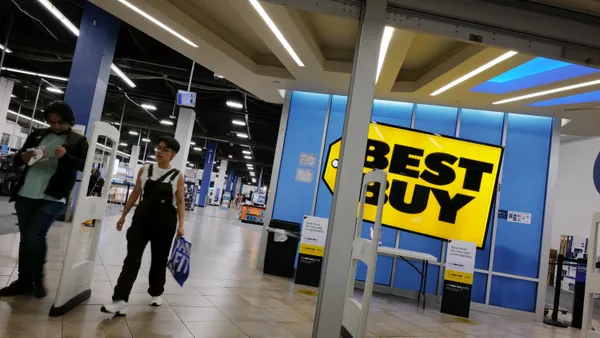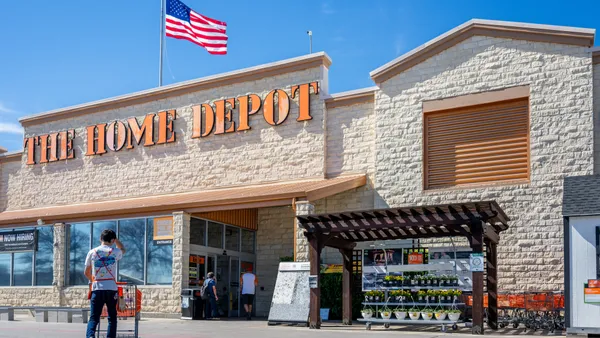UPDATE: Sept. 11, 2020: After filing for Chapter 11 in May, J. Crew has officially exited bankruptcy and says it is "well positioned for long-term growth," according to a Thursday press release from the apparel retailer.
Lenders have taken over controlling ownership after a federal bankruptcy court approved J. Crew's reorganization plan. That deal left investment firm Anchorage Capital Group as the retailer's current majority owner. Kevin Ulrich, Anchorage's CEO, said in the release that his firm sees "an immense opportunity for growth and expansion at each brand," which includes the J. Crew and Madewell banners.
Dive Brief:
- J. Crew expects to emerge from Chapter 11 in early September after winning court approval of its reorganization plan this week.
- The apparel seller's plans turn $1.6 billion in debt into equity, putting lenders in charge of the company. It also provides new debt capital in the form of $400 million in term loans and an asset-based exit facility worth $400 million.
- "The confirmation of our plan of reorganization is another significant milestone in our path to transforming our business to drive long-term, sustainable growth for J.Crew and further advance Madewell's growth momentum," Jan Singer, CEO of J. Crew Group, said in a statement.
Dive Insight:
J. Crew was the first major retailer to enter bankruptcy amid the industry-wide disruption caused by the COVID-19 pandemic. While that might be an unfortunate designation, its journey through the Chapter 11 process has been relatively smooth and it now has a chance to firm up its business in an environment still full of rapid change and uncertainty.
J. Crew is a case study not just for the COVID-19 crisis but much of the retail upheaval of the past four years or so. Burdened with debt from a private equity buyout, the iconic brand was in perpetual distress and a near-constant default risk. That continued even after executing a debt deal that brought on lawsuits over the status of its intellectual property.
All of that debt only made the sales declines at its namesake banner — a symptom of both broad apparel woes as well as J. Crew's own merchandising missteps — harder to turn around.
According to the company, there was a light at the end of the tunnel when 2020 opened, a deal that would have taken debt off its balance sheet while spinning off its fast-growing Madewell brand. But those plans fell apart following the chaos in the financial markets this spring. The pandemic also hurt the business itself. The company's COO said in court papers at the outset of Chapter 11 that J. Crew expected a $900 million hit to its sales for the year because of the pandemic and the temporary closure of its 500 stores.
Heavily indebted retailers like J. Crew, Neiman Marcus and J.C. Penney have been among the most vulnerable financially during the downturn, but others lacking scale or liquidity cushions have also fallen into bankruptcy or are in a much more precarious position than before the pandemic crisis.
J. Crew entered bankruptcy with a plan, reorganized relatively quickly and is now on its way out, with a chance to stabilize. Other retailers to file in the COVID-era have not been as fortunate. Pier 1 and Stage Stores, among others, have been forced into liquidation after failing to find buyers. Stein Mart will likely follow them along that path. J.C. Penney plans to sell itself, but continues pushing out deadlines and has been quiet in recent weeks about the progress on bidding. Neiman is closing in on a bankruptcy reorganization, but the process has been fraught with public drama and revelations about various stakeholders.
Bankruptcy can provide a second chance for retailers that have overextended their footprints and/or balance sheets. But the market, especially in apparel, remains highly competitive, constantly evolving and shaped by COVID-19 for the foreseeable future.














